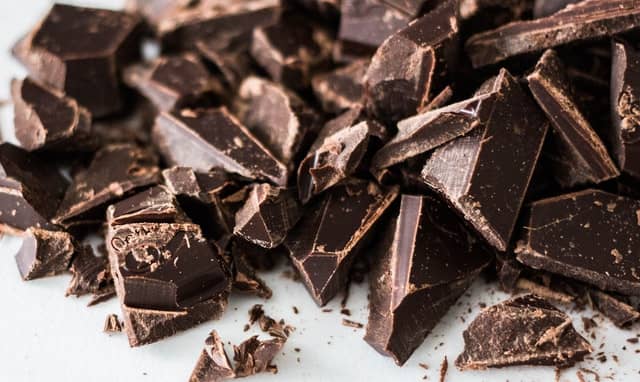Since chocolate is primarily made from the seeds of the cacao tree, chocolate chips should make the perfect indulgent treat for those who strictly adhere to a plant-based diet, but by the time it gets to your local supermarket or grocery store, the number of additives containing animal products, and the level of processing it undergoes would make it far from being plant-based.
So, are chocolate chips plant based? While some chocolate chips are plant based, especially dark chocolate, most contain milk fat along with other animal-based ingredients. Darker varieties of chocolate, in general, tend to be compliant with whole food plant-based diets, but its best to check the label for the ingredients.

In this article, we discuss plant-based chocolate chips, along with their ingredients, health benefits and more.
Why Are Chocolate Chips Plant Based?
Given that the core ingredient of chocolate chips come from the seeds of the cacao plant, it is fair to say that chocolate chips are primarily plant based.
Any product labelled ‘milk chocolate’ is not entirely plant-based but can still be part of your plant-based diet, depending on the percentage of plant-based ingredients among the others, along with the leveling of processing they undergo. Chocolate chips undergo various levels of processing moving them further away from their natural state, making them less whole, and thus, no longer ‘Plant-Based’.
Most ‘milk chocolate’ often contain plenty of milk fat to make the chocolate chips milder, sweeter and creamier. Even refined sugar is not considered whole food plant based, because even though it is made from cane sugar, it undergoes plenty of processing and involves the use of animal bone char.
What Are The Main Ingredients In Chocolate Chips?
Most high-quality, more expensive chocolate chip brands are made using cocoa, cocoa butter, cane sugar, vanilla, etc. Such varieties aren’t just more expensive but are also an acquired taste due to their bitterness, having less appeal to the masses.
Cheaper varieties often tend to be sweeter and milder, with milk fats, food starch, sugar and other artificial flavorings, that can no longer be considered whole-food or plant based, while also having lower nutritional value overall.
Chocolate Chip Nutrition
It is no secret that raw cacao has tremendous nutritional value, also considered a superfood for health and vitality, almost at par with avocados, blueberries, salmon, etc.
Raw cacao is known to be effective in treating cataracts and even improving heart functioning, and theobromine, a compound found in cacao seeds, is a non-addictive stimulant capable of treating depression.
Consumption of chocolate chips or chocolates in any form cause the brain to produce anandamide, a neurotransmitter responsible for euphoric sensations.
| Nutrient | 70-85% Cacao Solids, Dark Chocolate | 49-59% Cacao Solids, Dark Chocolate | 25-40% Cacao Solids, Milk Chocolate |
| Calories | 598 | 546 | 535 |
| Fat | 42.63 | 31.28 | 29.7 |
| Protein | 7.79 | 4.88 | 7.7 |
| Carbohydrate | 45.9 | 61.17 | 59.4 |
The data in the chart above is for 100 grams of chocolates of different varieties, and as you can see, the nutrient values change depending on what type of chocolate chips you eat and their ingredients.
The dark chocolate with 70% to 85% cacao solids may have the highest calorific density, but it also has low carbohydrates and higher constitution of fats, which is quite healthy since the body uses these fats to metabolize the carbs.
The milk chocolate on the lower end of the spectrum tends to have low fat and high carbs, which is essentially bad for your health. The fats in this are mostly composed of saturated fats, monosaturated fats and polysaturated fats, which are again, not considered healthy fats.
Conclusion
So, if you’re craving chocolate chips on a plant-based diet, you can surely indulge in some, but make sure to read the ingredient labels and ensure that the percentage of cacao and other plant based ingredients are on the higher end, and choose premium dark chocolates over others, for their high nutritional value.
Most Popular Questions: